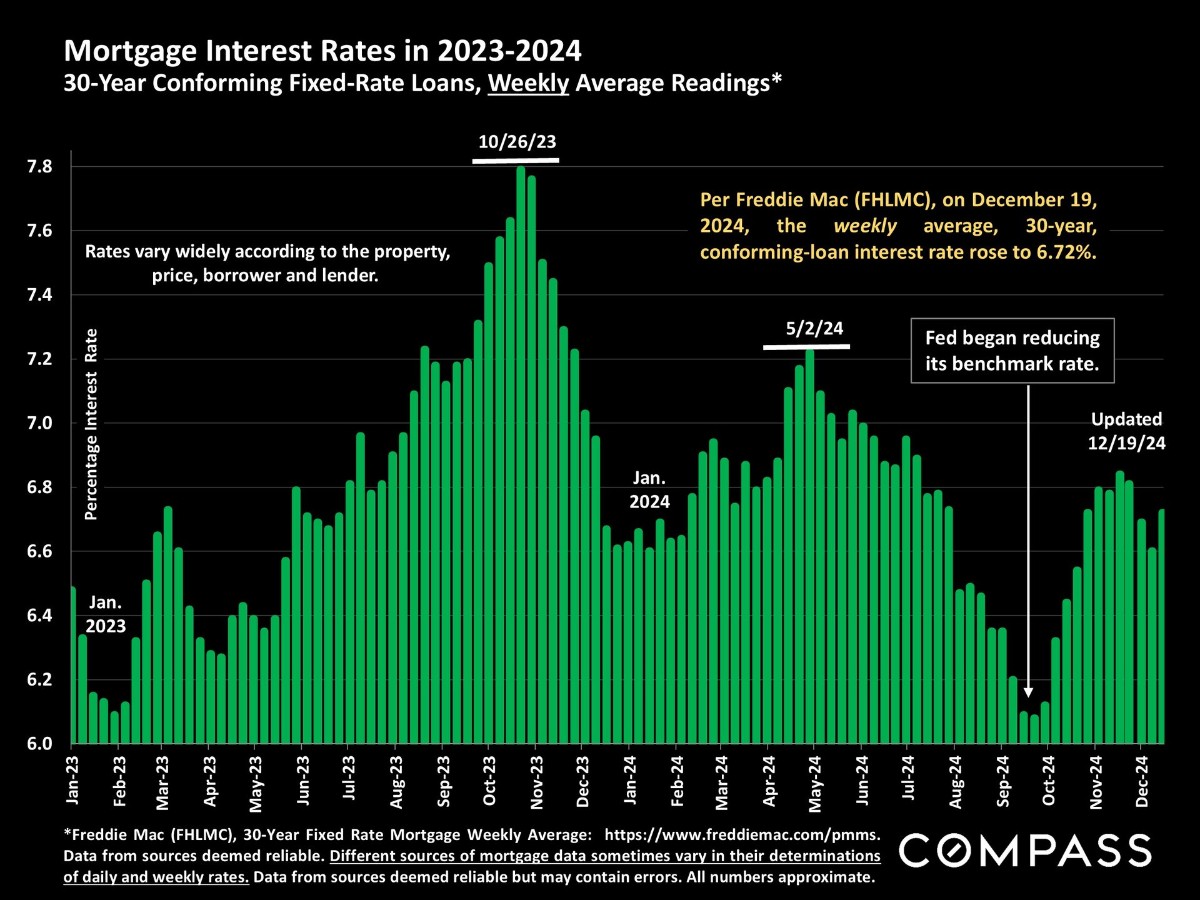2024 is in the bag. Emil and I had a very productive year, even better than 2023.
According to most of the macro news, the 2025 housing market is shaping up to be a year of moderate growth, shifting dynamics, and regional variations. Whether you’re a prospective buyer, seller, or investor, understanding these key trends will help you make informed decisions in an evolving landscape. Please remember that real estate is hyper-local. We will keep you informed throughout the year.

- Mortgage Rates: Stability with a Slight DecreaseMortgage rates, while expected to decline slightly, are likely to remain above 6%. This will continue to challenge affordability for many buyers, though a stable rate environment could encourage more market activity. In Kona, 43.6% of buyers purchased property with cash in 2024. The cash buyer increases as the price point moves higher.

- Home Prices: Modest Growth AheadHome prices are projected to see a moderate increase, returning to pre-pandemic growth levels.
- Realtor.com: Forecasts a 3.7% rise in home prices in 2025.
- Zillow: Estimates a 2.6% increase.
- Redfin: Predicts a 4% increase in median home-sale prices.
- National Association of Realtors (NAR): Expects a 2% growth in median home prices, reaching $410,700.
In California, the median home price is projected to rise by 4.6%, reaching $909,400 in 2025, following a 6.8% increase in 2024.
Big Island had a much higher appreciation rate in 2024. Let’s see how we do this year!
- Inventory Levels: More Homes on the MarketThe supply of homes is expected to increase by 11.7%, according to Realtor.com. A rise in inventory could ease competition for buyers, providing more options and stabilizing price growth. The Hawaii condo market experienced large inventory increase due to the insurance crisis. It did not affect the price in 2024.

- Regional Market Variations: Emerging Hot SpotsCertain markets are expected to outperform the national average, driven by affordability, job growth, and migration trends. According to NAR, key markets to watch include:
- Boston-Cambridge-Newton, MA-NH
- Charlotte-Concord-Gastonia, NC-SC
- Grand Rapids-Kentwood, MI
- Greenville-Anderson, SC
- Hartford-East Hartford-Middletown, CT
- Indianapolis-Carmel-Anderson, IN
- Kansas City, MO-KS
- Knoxville, TN
- Phoenix-Mesa-Chandler, AZ
- San Antonio-New Braunfels, TX
These metro areas have been identified for their affordability, income growth, and net migration trends.
The real estate market is hyper-local. We will update you throughout the year on the Big Island and Hawaii markets.
- Economic and Policy Influences: Uncertainty RemainsThe 2025 market could be influenced by policy changes, including tariffs, interest rate decisions, and immigration policies, which may impact housing affordability and demand. Keeping an eye on Federal Reserve actions and economic shifts will be crucial for market participants.
What This Means for YOU and Us.
- Buyers: More inventory means greater choice and potential price stabilization. However, higher mortgage rates may still impact affordability.
- Sellers: Home values are expected to grow but at a slower pace than in previous years. Proper pricing and strategic marketing will be key to selling in a more competitive market.
As 2025 unfolds, staying informed about these trends will help you navigate the housing market with confidence.





